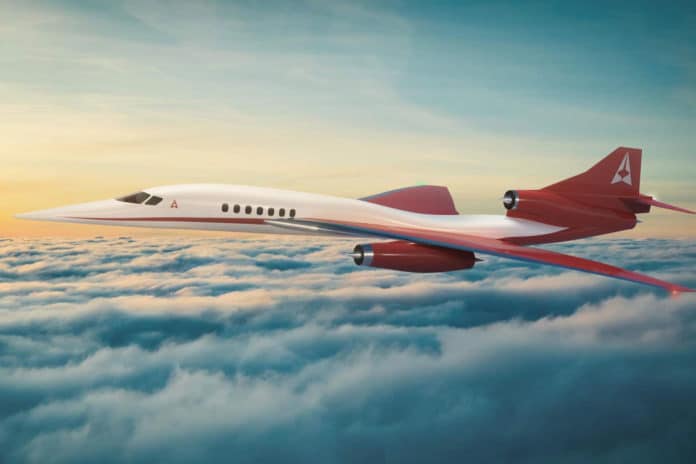Aerion Supersonic, an American manufacturer of supersonic aircraft, is reportedly shutting down operations, ending ambitious plans to bring a supersonic business jet to market later this decade. In March, the company announced it would begin production of its supersonic jet in 2023, with commercial operations in the second half of the decade.
The company has had trouble securing funding in the current financial environment and was going through the appropriate steps in light of the situation. In addition to the difficulty in obtaining funding, the unclear prospects of the supersonic business jet are also one of the main reasons for its closure, reports Florida Today and CNBC.
The main product of Aerion Supersonic was called “AS2”, which claimed to be the world’s first supersonic business jet. It did not target general passengers but was built for big business owners, allowing them to travel around the world at the fastest speed – reducing the time wasted on the road. It was meant to cruise at speeds over 1,600 km/h (1,000 mph) and was relatively quiet both inside and outside. Aerion had many well-known large companies in the aerospace industry as partners, including Boeing and GE, and garnered praise from Florida’s governor when it unveiled plans to build a factory at the Orlando Melbourne International Airport.
Of course, this is all in vain, but it is probably not too surprising. Product development in the aerospace industry is notoriously expensive, and technological breakthrough products like this are even more so. Aerion estimates that the development of AS2 would require $4 billion in funding, and during the COVID-19 pandemic, long-distance transportation is basically suspended. Obtaining such funds is naturally quite difficult. More importantly, air travel is far from a certain investment between public reluctance and companies that increasingly work from home during the pandemic.
This also makes the demand prospects for supersonic business jets not optimistic. The audience for these jets just isn’t as large as it was a couple of years ago, and it might not be for a while to come.
Having said that, this does not necessarily represent the end of the supersonic airliner. In addition to the NASA research, there are also private companies like Boom Supersonic that continue to develop products, and it is expected to be commercialized in 2029.
